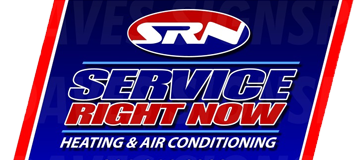24/7 Emergency Service
204-946-0808
Frequently Asked Questions
Furnace
Why should I purchase a new heating or air conditioning system from Service Right Now?
How can I find the system that’s right for me?
How long will my system last?
What is AFUE?
AFUE is the abbreviation for Annual Fuel Utilization Efficiency ratio. AFUE is used to rate furnace efficiencies by dividing the ratio of heat output by heat input. This measurement describes how well fuel, gas or oil is consumed to produce heat by a furnace. As the AFUE rate increases, the efficiency of your furnace also increases, lowering your fuel costs. What is a variable speed furnace? The term “variable speed” refers to the furnace’s indoor blower motor, which moves at different speeds to precisely control the flow of heated and cooled air throughout your home. Better airflow control has several benefits:
- Electrical efficiency:Variable speed motors can actually save you money on your energy bills, as they consume less electricity than standard motors.
- Cooling efficiency: Variable speed technology also means you will gain heating efficiency or AFUE.
- Zoning: Variable speed motors are excellent for zoning, which allows you to customize your comfort in different areas of your home and control your energy bills.
- Air quality: A variable speed motor can also help clean the air in your home. When the fan is in constant operation (indicated by the “Fan” setting on your thermostat), the motor will continue to slowly circulate air, allowing filters to capture more contaminants.
- Humidity control: A variable speed motor combined with a proper Home Comfort Control allows you to control the amount of humidity in your home for improved indoor air quality and comfort. The “modulating” gas furnace is the “most efficient and quietest furnace you can buy.”
Whose claim do I believe?
Why is it important to have regular maintenance on my home comfort system?
Why should I buy a modulating furnace?
There are three main reasons for choosing high efficient “modulating” variable furnace:
- With a dealer you know you can trust:
The modulating furnace is known throughout the world for bring quality home comfort. So when you choose, you can take comfort in knowing you’re getting the very finest in heating, cooling and indoor air quality. - An innovative, high-quality product for every need: As an industry leader, we can do what no one else can—deliver the complete range of products needed to assure your total comfort. From innovative furnaces and air conditioners to integrated home comfort systems, Service Right Now offers a comfort solution for every need.
- An unrivaled reputation for excellence: Our commitment to quality goes beyond our products and is also reflected in our reputation for quality service. You can trust Service Right Now to design the right system for your home, install it properly and keep it running perfectly for many years to come.
What is carbon monoxide?
Should I be concerned about carbon monoxide in my home?
What are some of the symptoms of carbon monoxide poisoning?
What can be done about detecting carbon monoxide in the home?
Air Conditioning
How does an air conditioner work?
What is Freon R-22?
Why is my system freezing up?
There are several factors that can cause system freezing. One thing you can do to prevent or correct this problem is to make sure the filter is clean or replaced. You can check to see if airflow is restricted.
- Dirty filter: After replacing or cleaning the filter, you can speed up the thawing process by turning the system off and turning on the fan. If you have a heat pump system, you can try turning the system to heating mode until the ice has melted. After the ice has melted, switch the system settings back to normal. If the system refreezes, contact Service Right Now to correct the problem at a reasonable and fair price.
- Low refrigerant:
In some cases, freezing is caused by a leak in the refrigerant lines. Weak solder joints, friction from piping rubbing or vibrating against an object, open valves or loose fittings are all factors that can cause leaks. When determining whether to have the system repaired or replaced, the age of the system and the nature and location of the leak are important considerations. - Dirty evaporator coil: Over time, the evaporator coil will become dirty. When this happens, you will begin to lose airflow, slowly enough that you probably would not realize it until it freezes up or cooling performance is compromised. At this point, you will need to contact your local dealer to correct the problem.
- Defective blower motor or relay: A blower motor not running at the proper speed or not running at all is another factor that can cause freezing. Motor operation may be intermittent, starting at full speed and slowing down after it heats up. Or, a relay could cause it to start one time and not the next. In either case, you will need to contact your local dealer to correct the problem.
